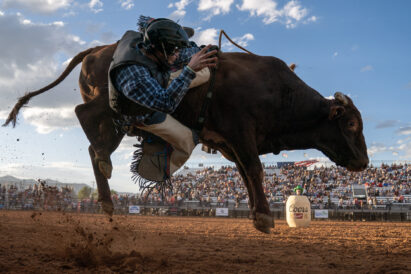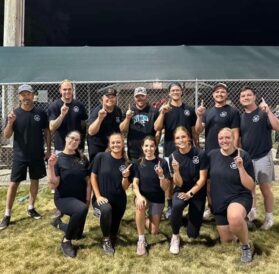Utah’s 2025 legislative session brings wildlife-related changes

Young hunters will have Utah's marshes all to themselves during two days in September. On Sept. 22, a Youth Waterfowl Hunt will be held in the Northern zone. In the Southern zone, the youth hunt happens Sept. 29.
SALT LAKE CITY — Utah’s 2025 legislative session saw the passage of several key bills impacting wildlife management, hunting, and fishing. With Gov. Spencer Cox’s deadline to sign or veto bills passing on March 27, a number of new laws have been finalized that will affect nonresident license fees, access to wildlife management areas, and the regulation of hunting guides and outfitters.
Increased fees for nonresident licenses (SB8)
One of the most notable changes comes with SB8: State Agency Fees and Internal Service Fund Rate Authorization and Appropriations, which allows the Utah Division of Wildlife Resources (DWR) to increase nonresident hunting and fishing license fees. While the bill does not mandate that fees be doubled, it permits adjustments to bring Utah’s pricing more in line with neighboring states. The additional revenue is intended to fund the purchase of large parcels of land to protect wildlife and expand public access for hunting and fishing.
Under the new law, nonresident fishing licenses will increase from $34 to $49 for youth and from $94 to $120 for adults. Nonresident hunting licenses will rise from $34 to $44 for youth and from $120 to $144 for adults, while combination licenses will increase from $38 to $58 for youth and from $150 to $190 for adults. These changes will take effect on July 1.
Nonresident hunt drawing application fees will also increase from $16 to $21 per application beginning Sept. 1. Additionally, nonresident permit fees for species such as buck deer and bull elk will see significant increases, particularly for limited-entry hunts. General-season nonresident buck deer permits will increase from $418 to $599, while limited-entry permits will rise from $670 to $1,070. General-season nonresident bull elk permits will go up from $613 to $849, and limited-entry permits will jump from $1,050 to $1,950.
These permit fee changes have already been approved by the Legislature and will not go through the typical public review process.
Changes to wildlife management area access (HB309)
With the passage of HB309: Wildlife Amendments, new regulations are in place for accessing wildlife management areas and waterfowl management areas in certain counties. Beginning May 7, 2025, anyone 18 years or older will be required to hold a valid hunting, fishing, or combination license to access a WMA in Davis, Salt Lake, Utah or Weber counties. This change aims to ensure that those benefiting from these lands contribute to their upkeep and conservation.
The bill also establishes new requirements for members of the Utah Wildlife Board and Regional Advisory Councils, mandating that they hold a valid hunting or combination license while serving and have held a license or permit for at least three of the past five years. Additionally, the legislation updates guidelines for night hunting and depredation payments for livestock owners affected by wildlife.
Funding for wildlife conservation (HB378)
Another significant change comes with HB378: Department of Natural Resources Funding Amendments, which introduces a tax on certain energy development projects. The funds generated will be allocated to Utah’s Species Protection Account, supporting conservation projects that help maintain healthy native species populations and prevent federal Endangered Species Act listings. This law will take effect on Jan. 1.
New waterfowl management area in Northern Utah (HB244)
HB244: Wildlife Management Area Amendments establishes the Bear River Bay Waterfowl Management Area on state sovereign lands in northern Utah. The new WMA will be managed to protect and sustain waterfowl, upland game birds, and other migratory and nonmigratory birds dependent on the Great Salt Lake ecosystem. The area will also support habitat preservation efforts and provide recreational opportunities such as hunting, fishing, trapping, and wildlife viewing. The law takes effect on May 7.
Regulation of hunting guides and outfitters (SB149)
With the enactment of SB149: Natural Resources Modifications, the DWR will now regulate hunting guides and outfitters, a responsibility previously held by the Utah Division of Professional Licensing. Beginning July 1, guides, outfitters, and spotters providing paid assistance for hunting or fishing will need to obtain a certificate of registration from the DWR and pay associated fees. The law also outlines the conditions under which guides can be compensated and when their certification may be revoked.
Additionally, new rules limit the number of guides allowed per permit holder. Up to three guides, outfitters, or spotters may assist a hunter with a bighorn sheep, bison, moose, or mountain goat permit on public land, while all other big game hunts are limited to two guides per permit holder.
Looking ahead
These legislative changes reflect Utah’s commitment to balancing wildlife conservation with public access and outdoor recreation. As the new laws take effect in the coming months, hunters, anglers, and outdoor enthusiasts are encouraged to stay informed and plan accordingly. For more information, visit the Utah Division of Wildlife Resources website.



